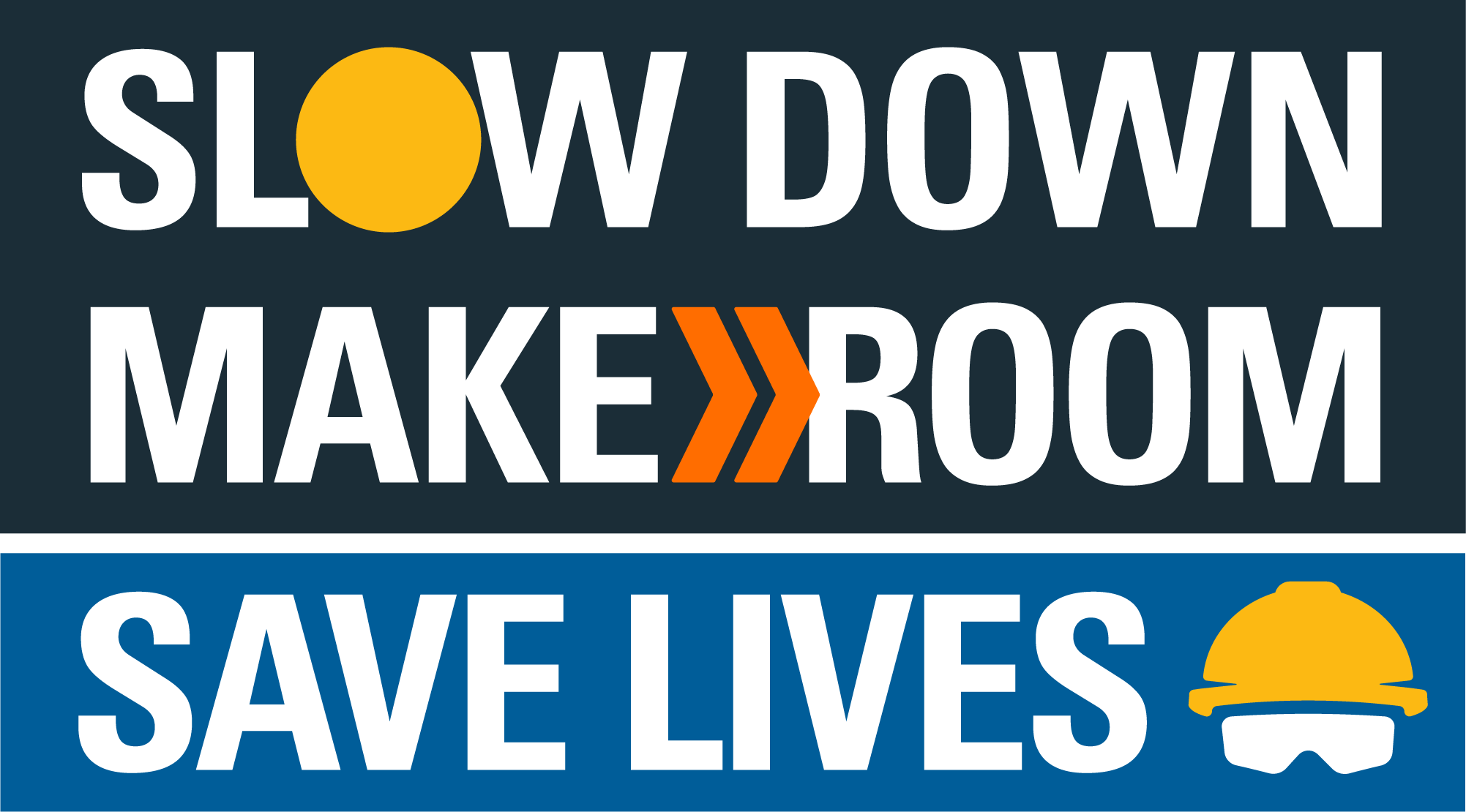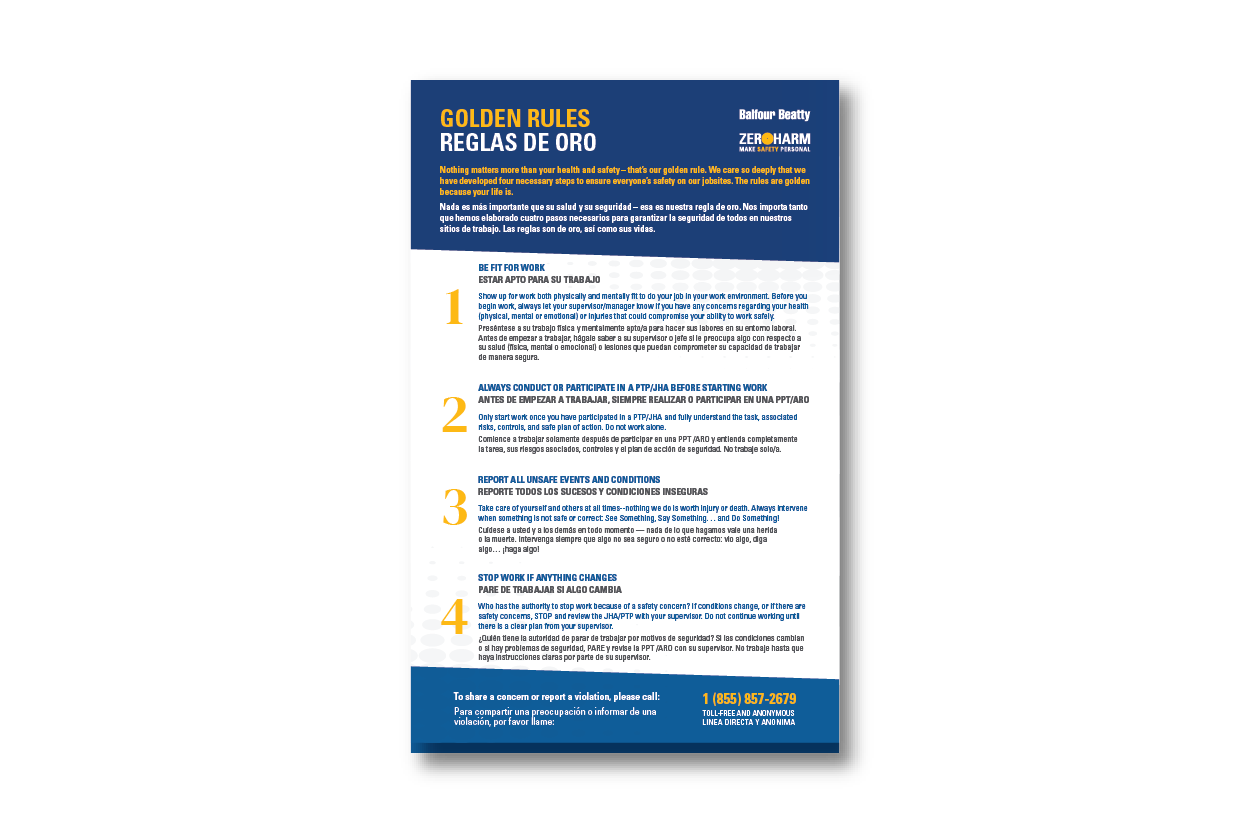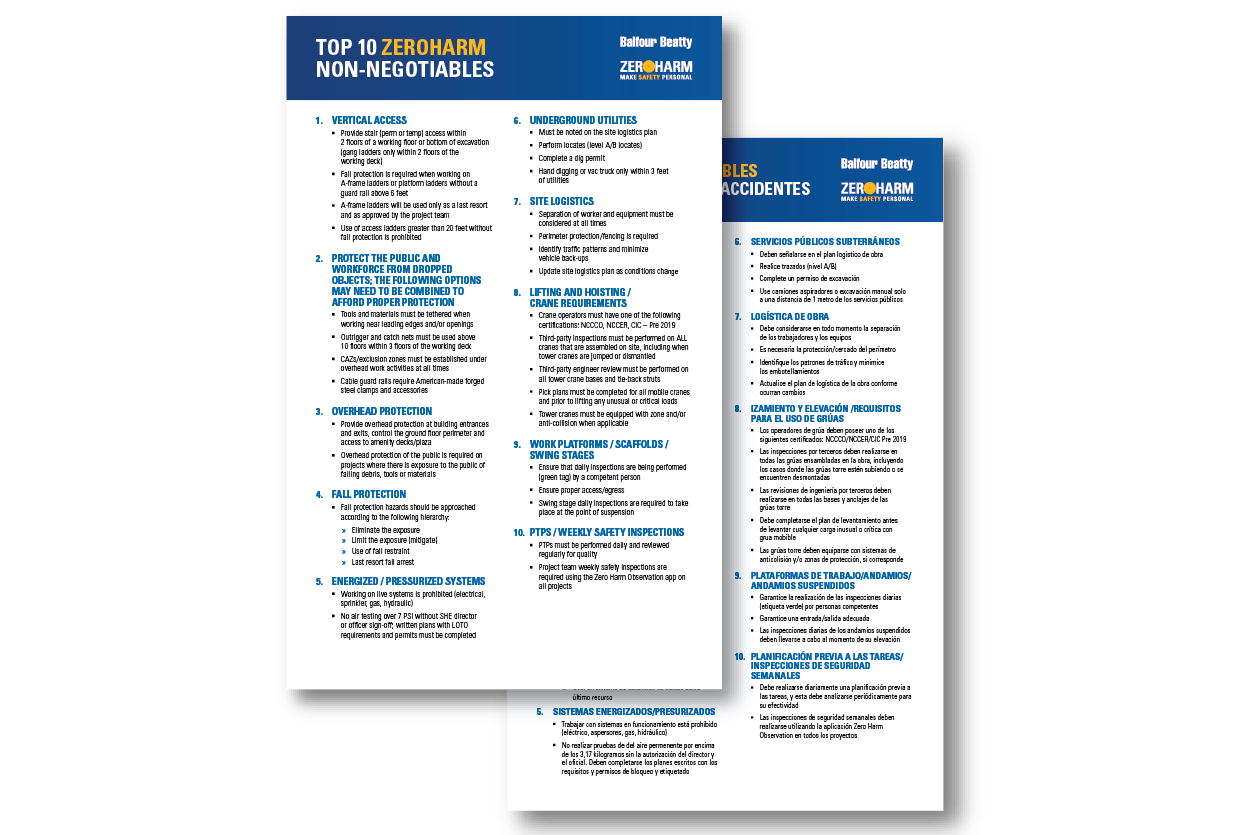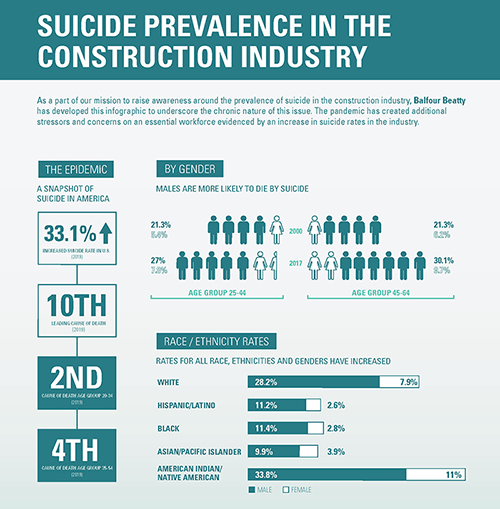Making safety personal 100% of the time.
Safety & Wellbeing

Zero Harm Vision
Originally launched in 2008, Zero Harm is ingrained in our culture and is central to our way of life and thinking at Balfour Beatty. Safety is owned by everyone at Balfour Beatty, not just by the safety professionals.
Zero Harm was born from a desire to lead the development of safety practices that would change our industry. Over the years, we have evolved and enhanced our ability to identify the root cause of incidents and drive change through safer processes and procedures—creating safer work environments for our workforce.
We have partnered with OSHA to develop better training programs for both our staff and our workforce. We’ve placed importance on enhanced communications by providing safety messages and instructions in both English and Spanish. Our Zero Harm Non-negotiables exceed OSHA requirements and align our safety practices across our project sites. This commitment to excellence is exemplified in our expansion OSHA’s “Focus/Fatal Four” to include live traffic as a fifth fatal risk, acknowledging the unique and deadly dangers we face when working near active roadways, pedestrian pathways and heavy machinery.
Today, our Zero Harm program is stronger than ever, continuing to make safety personal for every person that encounters our job sites. It has saved untold lives and has become synonymous with our people-first culture. The program unifies a common set of safety behaviors, methodology and a common language for every person on every project and workplace. It is the way we connect, communicate and protect each other.

Live Traffic: The Fifth Fatal Risk
Zero Harm demands that we recognize the full spectrum of safety hazards. Live traffic stands as our fifth fatal risk alongside OSHA’s “Fatal Four,” representing the immediate dangers our teams face when working in proximity to moving vehicles, pedestrians, heavy machinery and more. Whether on highway projects separated only by temporary barriers, or on urban sites coordinating deliveries through congested streets, this critical risk touches every aspect of our operations.
This recognition stems from our unwavering commitment to protect not just our workforce, but also the traveling public whose paths intersect with our projects daily. By elevating live traffic to this critical status, we strengthen our safety culture through enhanced training, innovative protection systems and proactive community engagement .
The inclusion of live traffic as our fifth fatal risk reminds us that safety doesn’t end at the project boundary, but instead, it follows us onto every road we travel. Each time we slow down, move over and stay alert on the road – especially in a work zone – we save lives.
This evolution of Zero Harm reflects our determination to remain at the forefront of construction safety, always remembering that our most valuable resource will always be our people.

Golden Rules
Nothing matters more than your health and safety – that’s our golden rule. We care so deeply that we have developed four necessary steps to ensure everyone’s safety on our jobsites. The rules are golden because your life is.
BE FIT FOR WORK
ALWAYS CONDUCT OR PARTICIPATE IN A PTP/JHA BEFORE STARTING WORK
REPORT ALL UNSAFE EVENTS AND CONDITIONS
STOP WORK IF ANYTHING CHANGES

Top 10 Non-negotiables
Our non-negotiables define areas where Balfour Beatty safety requirements go above and beyond OSHA requirements. These best practices have been developed over our Zero Harm journey. When it comes to our non-negotiables, these are not choices; rather, they outline our commitment to operate and protect every worker and the public at all Balfour Beatty project sites. The non-negotiables align technical safety procedures with industry trends and specifically identify non-negotiable work site safety protocols that surpass industry standards and norms to make our projects a safer environment for all workers.

What3Things?
What3Things is a simple summary of three key prompts that should be applied to each of the fatal risks. They are to be used in conjunction with our Golden Rules and remind the workforce of the key measures that must be considered and put in place before work begins. What 3 things can keep you safe? That is a constant question at our work sites.

See Something, Say Something
The See Something, Say Something initiative lets everyone who comes into contact with a Balfour Beatty workplace know that it is both their right and responsibility to voice concerns if they observe an unsafe act or condition. Our teams have taken it a step further and empowered anyone who comes in contact with our work to “do something” if speaking up isn’t enough. Our teams work hand-in-hand with our industry partners to create a culture where everyone is empowered to speak up on behalf of the health and safety of anyone who comes in contact with our work.

One Second, One Choice
One Second, One Choice reinforces the personal decision to make safe work choices. It provides an important reminder that a split-second choice can change a life forever—be it a choice you make for yourself or a choice you make about speaking up when something doesn’t look right. It gives everyone on our projects a voice and the power to stop and think about the safest way to proceed to make the right choice for safety. When it comes to safety, every choice matters; each and every second counts. There is not one choice or one second that can be taken for granted when lives and wellbeing are at risk. There are no do-overs.
Balfour Beatty Recognizes Live Traffic as Fifth Fatal Risk in Construction
To lead the industry and make our work zones safer, Balfour Beatty has launched a new initiative to recognize live traffic as a fifth fatal risk in construction. This expands beyond OSHA's long-established and well-entrenched Fatal/Focus Four hazards in our industry. Balfour Beatty’s initiative acknowledges the uniquely deadly and debilitating hazards posed by vehicles traveling through work zones and underscores our commitment to eliminating live traffic risks to our workforce and the public. Watch our teammates describe their raw and emotional experiences working in and around live traffic and join our efforts to eliminate live traffic risks so everyone goes home safely each day.
Work Zone Tragedies Inspire Legislative Triumph
Balfour Beatty joins industry partners to successfully advocate for groundbreaking, new work zone safety education in North and South Carolina.
Read moreDelivering Safer Work Zones, One Digital Alert at a Time
Balfour Beatty teams tap into the power of the cloud to create greater work zone awareness.
Read moreShining a Light on Work Zone Safety
Balfour Beatty leverages new, lifesaving technologies to enhance visibility of workers and equipment.
Read moreConcrete, Cranes—and Cars?
Balfour Beatty elevates safety where work and traffic collide by addressing the unique live traffic hazards on vertical buildings projects.
Read more
Zero Harm in Action
John Leland speaks about the Balfour Beatty Zero Harm experience
At Balfour Beatty, our Zero Harm culture isn't just something we do, it's our way of life. After working with our teams on a number of Solana Beach School District projects, John Leland, assistant superintendent, administrative operations, recognizes that Zero Harm is more than an add-on for our teams - it's a focus. Watch as our valued client shares his perspective on our safety mindset.
Safety Information
Our safety protocols extend beyond our workplaces and address anyone who may come into contact with our work. Here are quick ways to get in touch with us and reminders to keep everyone safe.
Zero Harm is Ingrained in Everything We Do
Safety is a deeply personal issue—one that reaches beyond our jobsites to impact families and individuals in ways both great and small. We want to ensure that everyone is safe 100% of the time, on 100% of our projects, and we will do everything in our power to achieve this. At Balfour Beatty, Zero Harm is a way of life.
English
Spanish
Pre-Task Planning
A good pre-task plan can save a life. And make no mistake, there is a right way and a wrong way to conduct a pre-task plan meeting with jobsite teams. At Balfour Beatty, we want to ensure everyone is fully engaged, understands the plan, aware of any changed conditions and is empowered to speak up.
Suicide Prevention: Our Collective Responsibility
Suicide prevention is a vital component of Balfour Beatty’s commitment to Zero Harm. As an industry leader in a field that consistently experiences high suicide rates, Balfour Beatty aims to inspire our teammates, trade partners and peer organizations to recognize the warning signs of suicide early and act accordingly, and to provide employees with vital mental health resources.
One of Balfour Beatty’s priorities is that every person – on a jobsite or in an office – is fit for work. Work-ready fitness is not just a state of physical health and readiness but also of emotional and mental health. When workers are mentally and emotionally healthy, they feel better equipped to approach their work with focus and clarity, reducing accident and injury risk and benefiting every aspect of their teams and projects.
According to the U.S. Centers for Disease Control and Prevention (CDC), construction workers have the second highest suicide rate of any vocation in the nation. Contributing factors are believed to include:
- Periods of unsteady or seasonal employment
- Mental health stigma
- Sleep disruption
- Chronic pain related to manual labor
- Jobsite travel, which may separate workers from social support circles
- Frequent physical strain
- Access to means of committing suicide
- Pressure to finish projects
Whatever the cause of an individual’s mental health struggle, our mission as a community of construction professionals is to reduce construction worker suicide rates.
Advancing Zero Harm - Every Day
